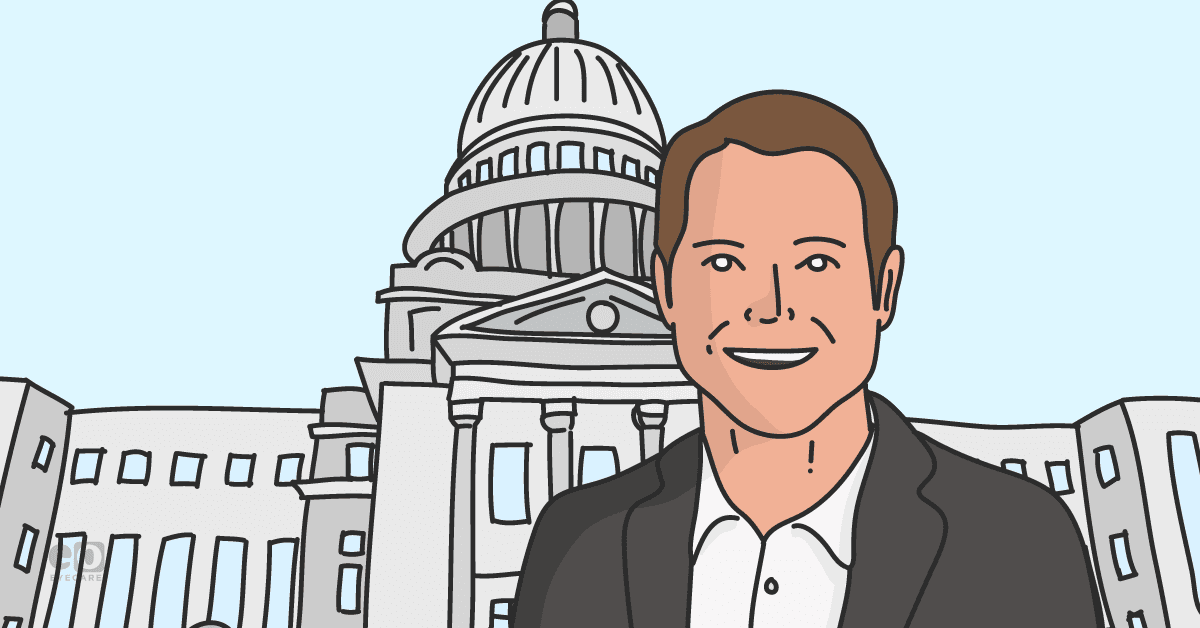When asked what drew them to the field, the majority of doctors will say it was their desire to improve the health of individuals and the overall health of communities. This held especially true for Michael Mayers, OD, FAAO. As an optometrist and practice owner, Mayers saw himself not only as an eyecare provider, but as an advocate. He stated, “Every patient encounter is an opportunity to educate. We take care of not only their eyecare, but their total healthcare. And so I think every optometrist advocates every day.”
After years in a clinical setting and as a consultant for several eye health companies, Mayers realized he wanted to advocate for patients on a broader scope and focused his passion toward policy solutions. He currently serves as Director of US Advocacy for Johnson & Johnson Vision where he heads up their eye health advocacy efforts and engages with legislators, regulators, associations, and doctors to promote patient health and safety and a strong patient-doctor relationship at center of care.
Mayers stated, “I am standing on the shoulders of the giants that allowed us [optometrists] to get diagnostics, to dilate patients, and then get pharmaceutical rights for being able to treat ocular disease. That really is what inspired me. This is an opportunity to continue to promote optometry and have a platform to talk about optometry in a different light while continuing to serve patients.”
Most recently, Mayers rallied support for the Contact Lens Prescription Verification Modernization Act to enforce important patient safety requirements for sellers verifying contact lens prescriptions, and eliminating robocalls as an accepted means of confirmation.
Contact lenses—being classified by the FDA as Class II or Class III medical devices—require prescriptions from their eyecare provider and warrant stringent safety provisions. According to Mayers, “We know if the patient doesn't get exactly what the doctor prescribes, it can put that patient at risk for a potentially sight-threatening adverse event, which we don't want to see. And so we just want to keep patients safe and healthy. We want to allow sellers to be able to fill that prescription, but to fill the correct prescription so that the patients stay safe while wearing those lenses.”
How optometrists can get involved
Mayers’ advice to other optometrists inclined toward advocacy efforts is simply to “get involved and have a voice at the table.” As a first step, he suggests contacting the local chapter or state optometric association or even speaking with leadership at the American Optometric Association to develop a deeper understanding of the relevant issues at a local, state, and federal level."
“The AOA does a great job advocating for the profession and really making sure that optometry voices are heard and that we're continuing to serve patients in new and different ways,” said Mayers.
Another valuable resource Mayers recommends is the Health Care Alliance for Patient Safety (APS), which Johnson & Johnson founded alongside the AOA in 2018. Mayers added, “It’s great when a collection of voices like APS come together to further amplify key issues.”
Once a burgeoning optometry advocate has gained a grasp of the important issues, they can take their concerns to their state legislature or all the way to Capitol Hill—even if that must be done virtually, as has been the case for the past year and a half. Of this unique time, Mayers said, “We stayed active and found new ways to engage. We went from face to face meetings with policymakers to virtual meetings. Many Members of Congress were willing to virtually open their doors and connect their staffers, as well, to engage.”
Advocates are now back in Washington, DC, and looking toward the future.
Future opportunities for eyecare advocacy
As for what is on the horizon in regards to optometric key topics, Mayers remarked childhood myopia is an eyecare pandemicand forecasted focus. He said, “The increasing incidence of childhood myopia is a really big issue. We, as doctors, are trying to really amplify that issue across several key stakeholders educating them on the key issues and newer evidence based interventions to slow down the myopia pandemic in children. He also sees artificial intelligence and telehealth as two topics warranting widespread discussion ensuring as these technologies become more widespread it continues to keep the patient doctor relationship at the forefront”.
In closing, Mayers stated, “It's just so important to hear the collection of voices out there. Don't be afraid to put yourself out there and get involved. You can start by reaching out to your legislators to make your voice heard in support of the Contact Lens Prescription Verification Modernization Act. The time to act is now.” Click here to take action.
